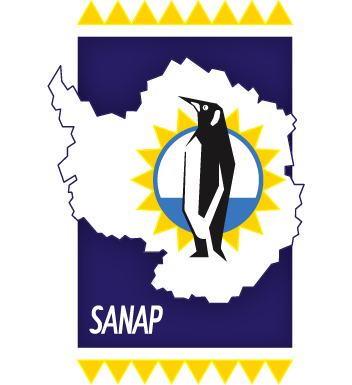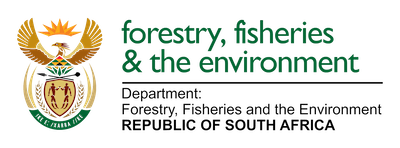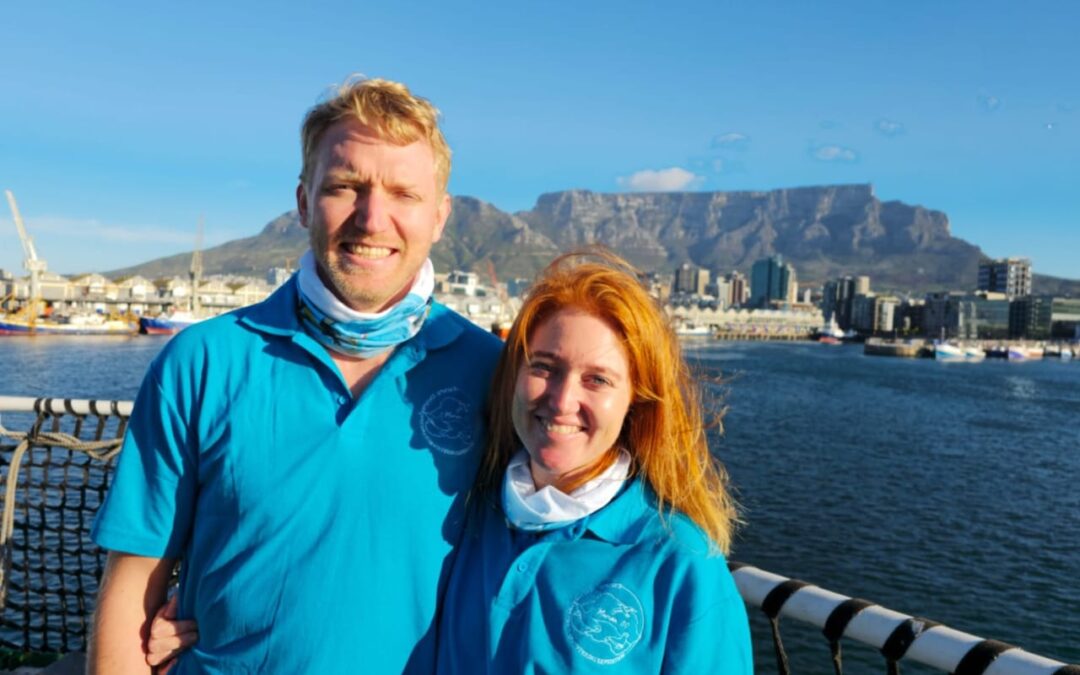
by Ria Olivier | May 10, 2023 | Current Event, Marion Island, News, Overwintering Team, Prince Edward Islands, Research, SANAP, SAPRI, Science, Southern Ocean, Stations, sub-Antarctic, Team member
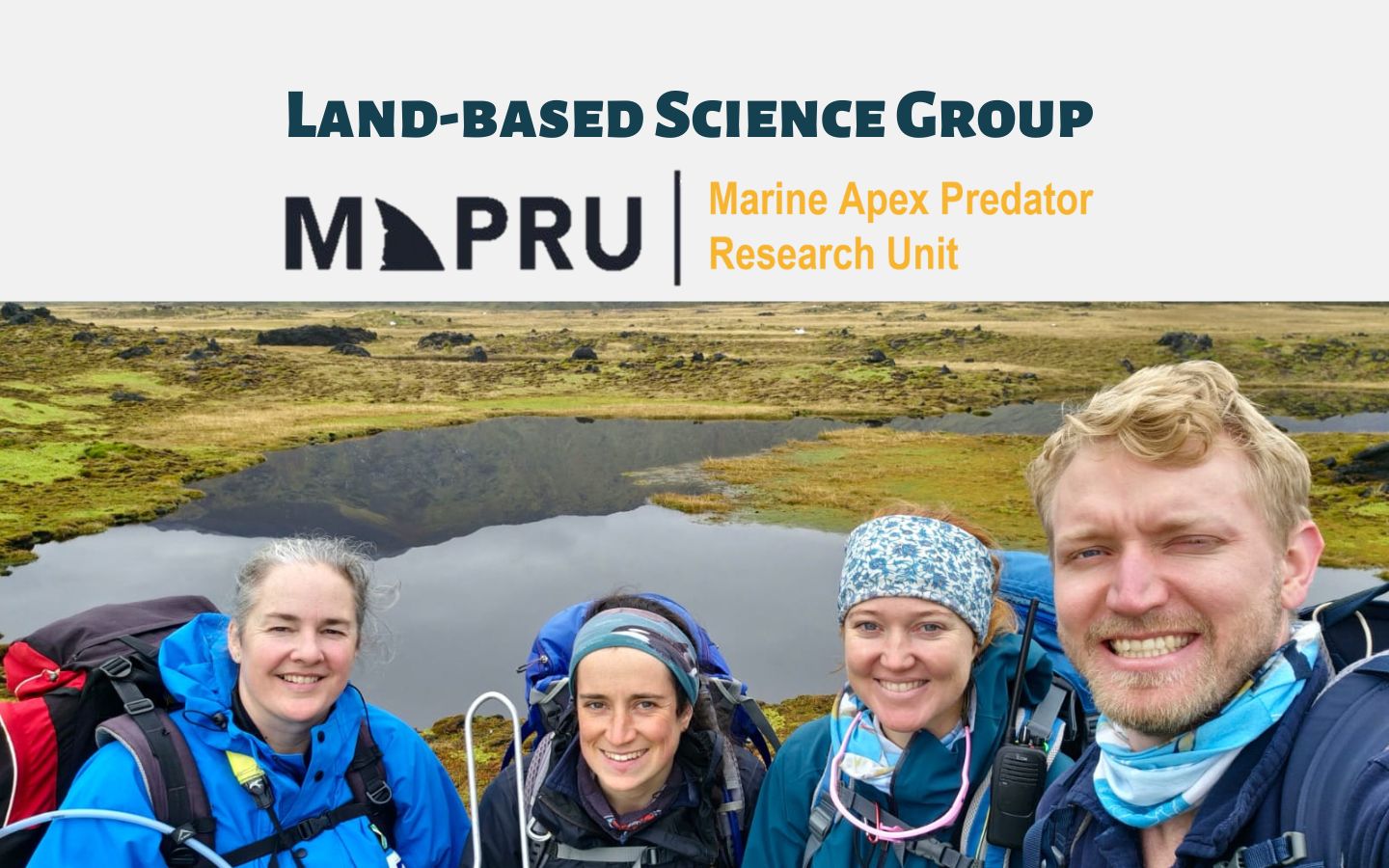
| TEAM | MAPRU | Affiliation |
| Project Name | Avian scavengers & seabirds |
| Principal Investigator | Dr Maëlle Connan | MAPRU, Nelson Mandela University |
| Co-Investigator | Prof Peter Ryan | Fitzpatrick Institute of African Ornithology, University of Cape Town |
| M79 Field Assistant | Lucy Smyth | MAPRU, Nelson Mandela University |
| M80 Field Assistant | Christopher Jones | MAPRU, Nelson Mandela University |
| M80 Field Assistant | Michelle Risi | MAPRU, Nelson Mandela University and the South African Polar Research Infrastructure (SAPRI) |
This team is studying seabirds at Marion Island and has two projects for the period 2021-2023:
1) Avian scavenger project focusing mostly on Black-faced Sheathbill, Kelp Gull and Brown Skua as well as some of their prey.
2) FitzPatrick long-term monitoring of Wandering Albatross, Grey-headed Albatross and Northern Giant Petrel.
More about the avian scavenger project:
This project started in 2021. It is tightly linked to the Mouse-Free Marion project.
Our aim is two fold: 1) we fill identified scientific gaps at the bird level that are crucial for best planning of the mouse eradication and development of appropriate mitigation measures. We are mostly focusing on three species of avian scavengers: Black-faced Sheathbill, Kelp Gull and Brown Skua and some of their prey. 2) we propose to use the three scavengers as indicators of recovery of the terrestrial ecosystem post-eradication by establishing baselines for the scavenger guild and their prey against which the impact of a successful mouse eradication can be measured in years to come.
More about the FitzPatrick long-term monitoring project:
The FitzPatrick long-term monitoring of Wandering and Grey-headed albatrosses and Northern Giant Petrel started in the early 1980s and has continued ever since. This individual-based monitoring of threatened species allows us to study the threats they face at sea (e.g. fisheries) and on land (e.g. mice) in order to act and decrease these threats and improve the conservation status. The species’ long-term monitoring is crucial as it allows us to decipher abnormal years from long-term trends.
More about the fieldwork:
The two projects above involve for example extensive counts of birds, lots of hiking, observations of bird behavior and record keeping of the activity of known individuals year after year.
What are your plans for this takeover:
During the takeover, we will be debriefing the year of Lucy Smyth who has worked on the island for our projects since April 2022. We will also train Chris and Michelle for the year ahead in all aspects, from field work to data entry and back-ups.
Follow MAPRU:




Follow PFIAO:




Text by Dr Maëlle Connan.
Images supplied by Christopher Jones.
Featured image: The MAPRU takeover 2023 team. L-R: Dr Maëlle Connan (PI), Lucy Smyth (M79 MAPRU Field Assistant), Michelle Risi (M80 MAPRU Field Assistant) and Christopher Jones (M80 MAPRU Field Assistant). Image taken on the Western side of the island.
Anche Louw, South African Polar Research Infrastructure (SAPRI DPS Node), 10 May 2023
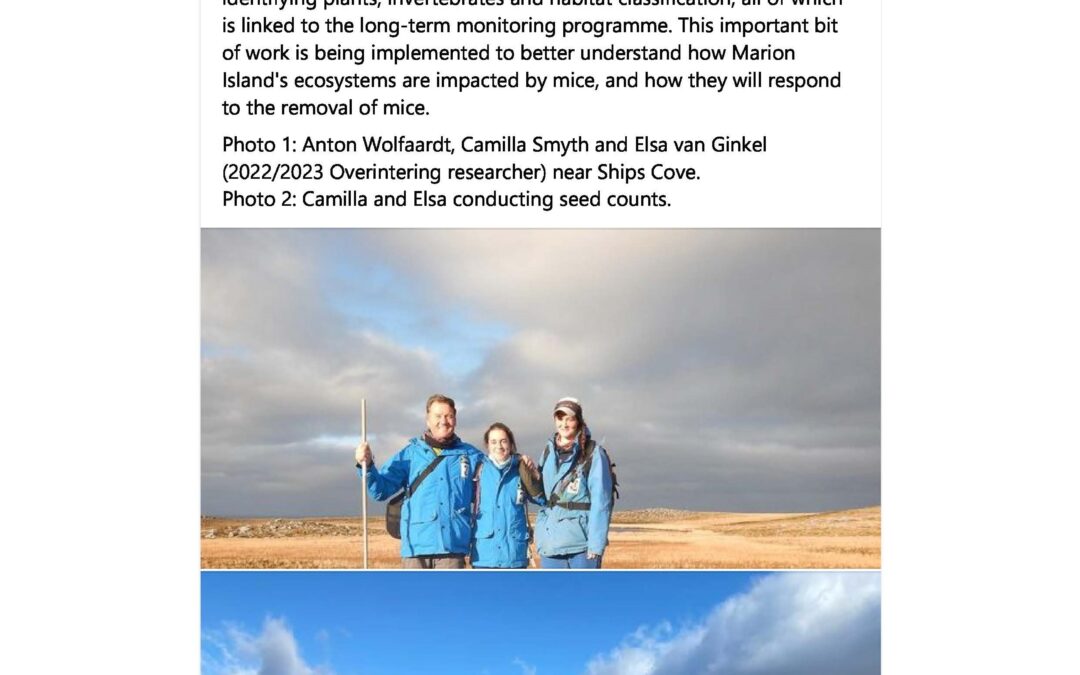
by Ria Olivier | May 5, 2023 | Invasion Biology, Marion Island, Mice Eradication, News, Prince Edward Islands, Research, SA Agulhas II, SANAP, Southern Ocean, Stations, sub-Antarctic, Team member
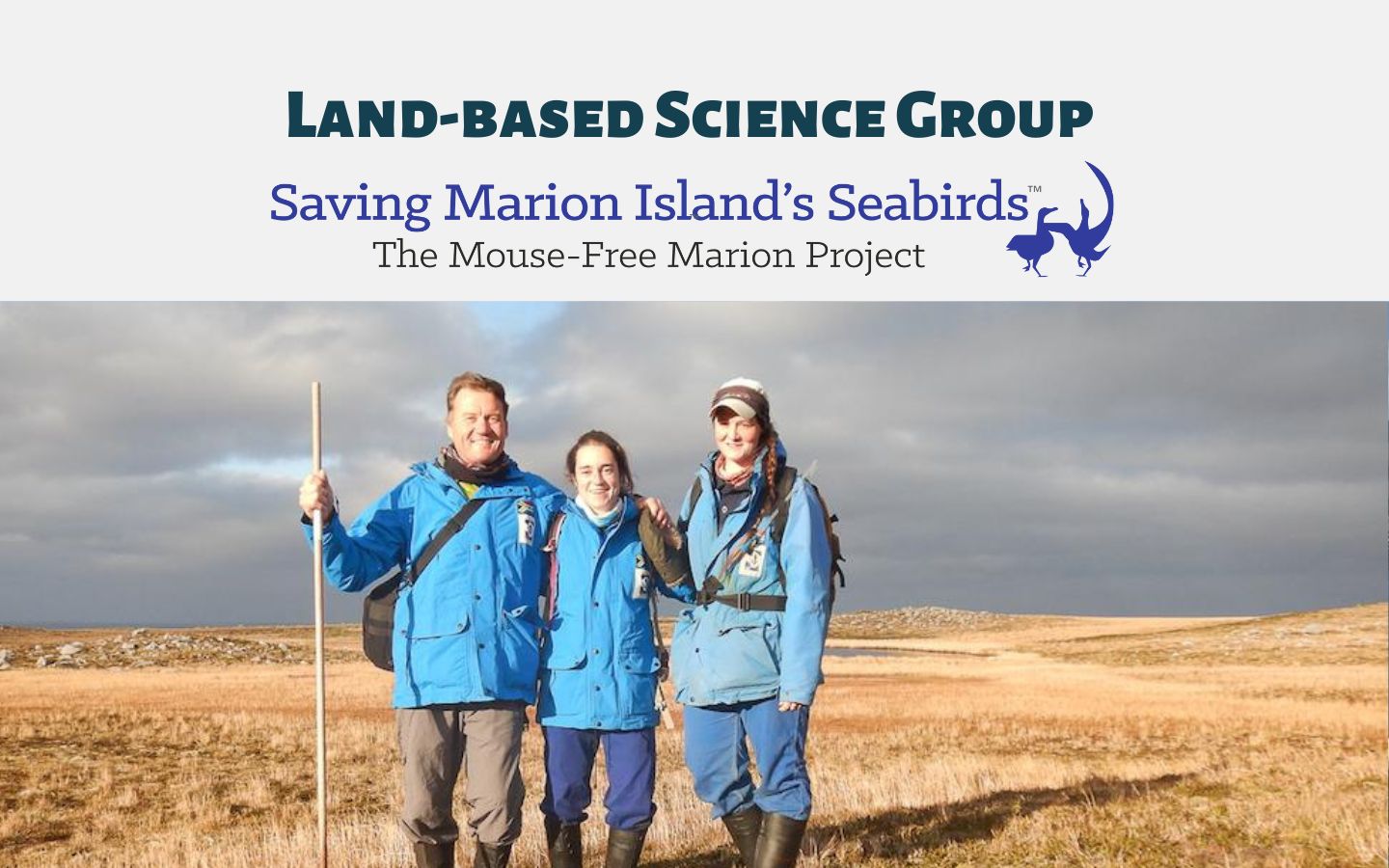
| TEAM | Mouse-Free Marion |
| Project Name | Longitudinal monitoring of terrestrial diversity to assess the effects of the planned mouse eradication on Marion Island, and bait and mouse trials to inform further planning for the Mouse-Free Marion Project |
| Project Manager | Dr Anton Wolfaardt |
| Collaborator | Prof. Michelle Greve |
| M79 Field Assistant | Elsa van Ginkel |
| M80 Field Assistant | Camilla Smyth |
The Mouse-Free Marion Project is a partnership between the Department of Forestry Fisheries and the Environment (DFFE) and BirdLife South Africa, working towards an operation to eradicate invasive mice from Marion Island.
The mice, which were introduced accidentally some 200 years ago, have caused great harm to the ecology of Marion Island. They feed on indigenous invertebrates, damage vegetation, and have more recently started eating seabird chicks. As a result, the mice are considered to be a major pest to the island. If they are not removed, the ecosystem of the island will continue to deteriorate, and they will likely cause most of the seabirds on the island to become locally extinct. These seabirds will be lost to the island forever.
In order to monitor how the island recovers after the mice have been removed, we are collecting data on aspects of the island that we expect to improve once the mice are gone. These include the vegetation and invertebrates. Colleagues working on other projects are collecting similar data on seabirds.
The reason why it is important to collect this data before the eradication operation is so that we can compare and monitor how the island changes (improves) as a result of the eradication operation – comparing the island’s vegetation and invertebrate features before and after the operation.
More about your plans for this takeover?
The project will make use of data that have already been collected over many years, primarily through the various long-term monitoring projects that have been undertaken at Marion Island over many years. The focus of our work currently is to fill some pre-eradication (baseline) data on vegetation and invertebrates. This particular work was initiated during the 2022/23 period, and will continue in 2023/24. The takeover period will be used to provide training and orientation to the new Marion80 overwintering team member (Camilla Smyth) and for the current Marion79 Mouse-Free Marion overwintering team member (Elsa van Ginkel) to hand over the field-work responsibilities to Camilla.
The work includes standard invertebrate and vegetation survey techniques to establish a baseline that can be used to monitor how these ecological parameters change following the eradication of invasive mice. These surveys will repeat and build on historical surveys that have been undertaken on the island previously.
We will also be undertaking further bait trials and weather monitoring to help inform the planning of the baiting operation.
Latest takeover update from the island (on 26 April 2023)
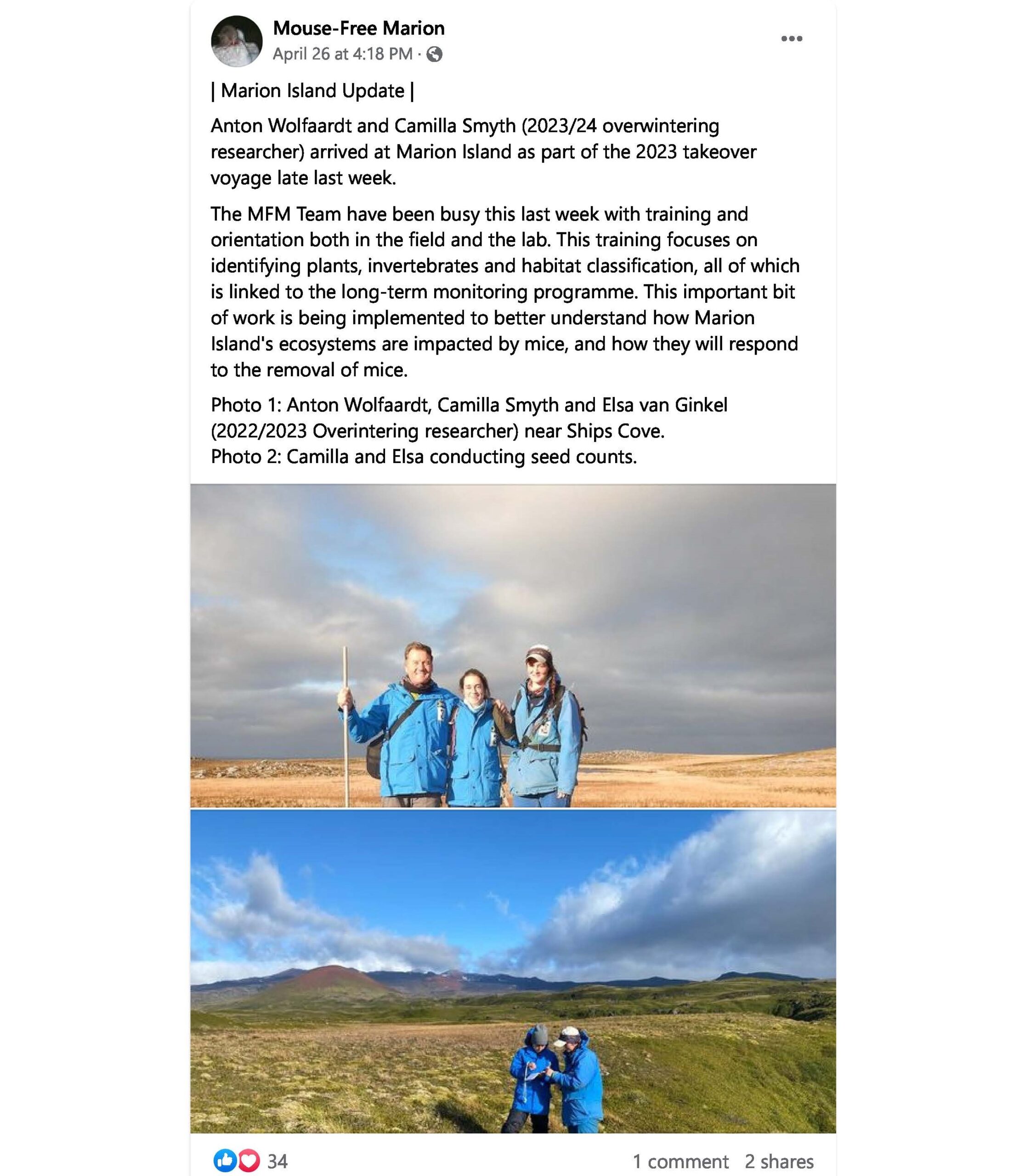

Check out the Mouse-Free Marion Website!
Follow MFM on social media for the latest updates:


Text and images supplied by Dr Anton Wolfaardt.
Featured image: The MFM takeover 2023 team. L-R: Dr Anton Wolfaardt (MFM Project Manager), Camilla Smyth (M80 MFM Field Assistant) and Elsa van Ginkel (M79 MFM Field Assistant). Photo taken on Marion Island, April 2023.
Anche Louw, South African Polar Research Infrastructure (SAPRI DPS Node), 05 May 2023
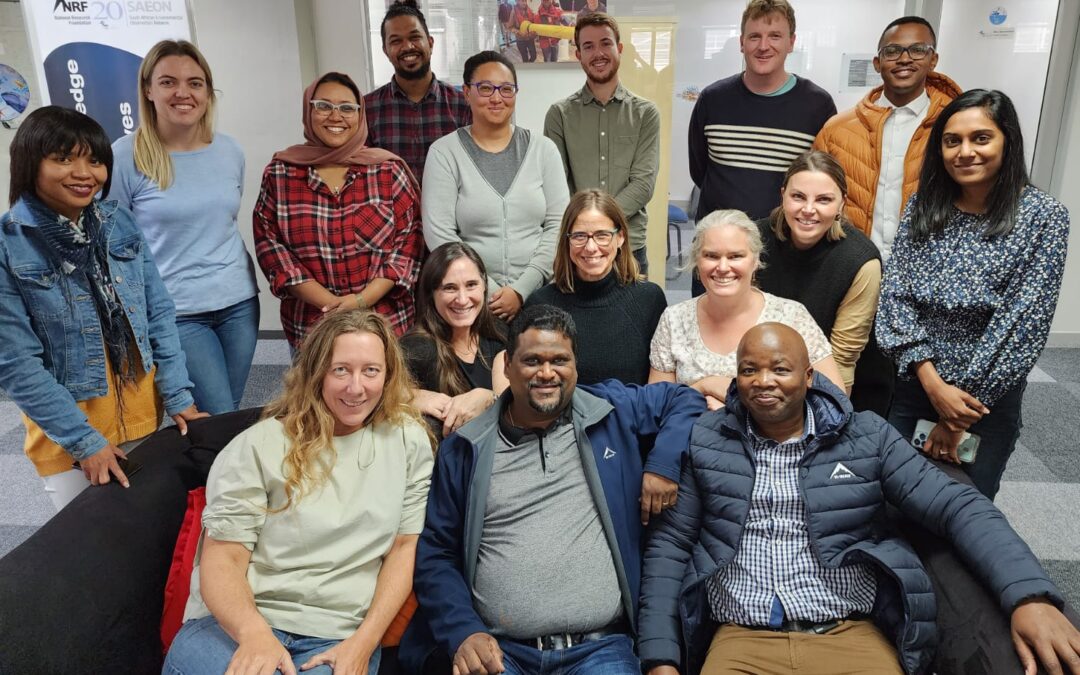
by Ria Olivier | May 4, 2023 | Announcement, Antarctica, Gough Island, Legacy, Marion Island, News, Prince Edward Islands, SA Agulhas II, SA Polar Research Infrastructure, SANAE IV, SANAP, SAPolarRI, SAPRI, Southern Ocean
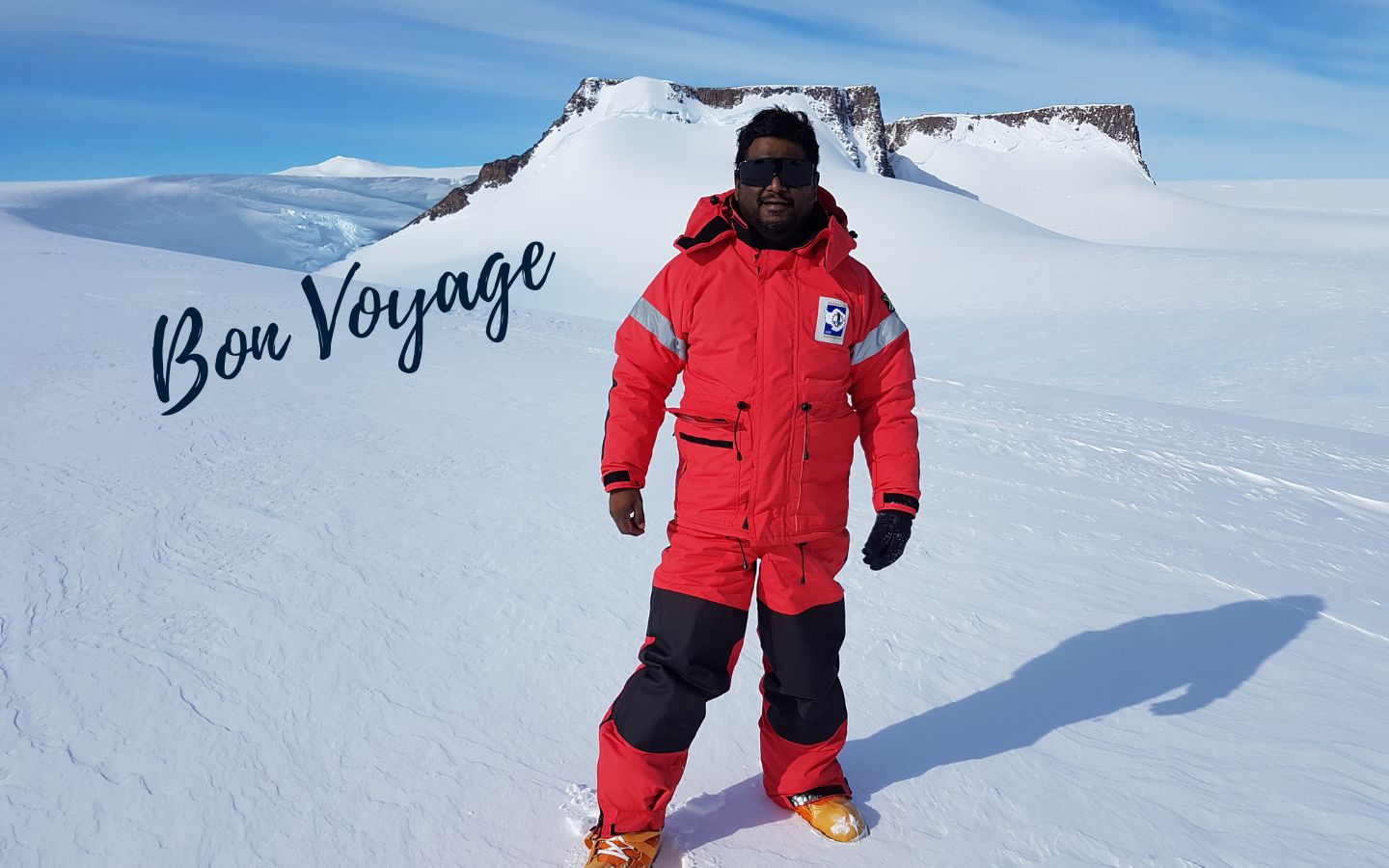
Dear Colleagues,
As I prepare to turn the page of a decade-long chapter of managing Operations and Infrastructure Support for Antarctica and Southern Ocean work and move on to new horizons, I wanted to take a moment to express my heartfelt gratitude to each and every one of you. Working together in enabling South Africa’s presence in this unique and challenging environment has been an unforgettable experience that has enriched my life in countless ways.
The extreme conditions and remoteness of the environment have demanded the best of me, and I am incredibly proud to have been part of it all. It sometimes felt like dealing with the logistical complexities of supporting Marine and Antarctic activities were the same as navigating the harsh ice conditions. We have faced and overcome numerous challenges as a team. Even though we may not have agreed on everything, the bonds we have built and the memories we have made will always hold a special place in my heart. I am truly grateful for the friendships, support, agreements and disagreements we have shared.
I am also deeply appreciative for being entrusted to manage South Africa’s presence in these pristine environments, and to have personally witnessed the beauty and wonder of Antarctica, Marion Island and Gough Island. The rough seas, breathtaking landscapes, unique wildlife, and understanding that there is so few which get this opportunity, have left an indelible mark on me, and I will forever cherish these memories.
As I move on to new endeavours away from the Ocean and Polar space, I will carry with me the valuable lessons I have learned especially when dealing with an unpredictable environment – the importance of adaptability, resilience, teamwork, and tenacity. The various curveballs and unexpected challenges have made me more resourceful in finding solutions. I am confident that the skills and experience gained will serve me well in my future pursuits.
I would like to extend my heartfelt thanks to each and every one of you for your unwavering support, dedication, and friendship during my tenure in the Antarctic and Marine space. I will always treasure the memories and the connections made, and I wish you all the very best in your ongoing work in Antarctica and the Southern Ocean or wherever your paths may lead you.
Thank you for being a part of this incredible journey, and please stay in touch.
With deepest gratitude,
Nish Devanunthan
Former Operations Coordinator: South African Polar Research Infrastructure (2022 to 2023)
Former Director – Operations and Engineering: South African National Antarctic Program (2013 to 2022)
Farewell gathering at SAEON Egagasini Node end of April 2023
Message from the SAPRI Team:
Even though Nish was with SAEON and SAPRI for only 9 months, he left a great legacy and managed to really ramp up the operations within SAPRI. He has a fountain of knowledge on Antarctica and Islands, DFFE, the S.A. Agulhas II and supply chain management, yet he still has a great sense of humour and commitment to action in the face of bureaucracy.
Nish, fair winds and following seas, we have the watch (although might ring you every now and then!).
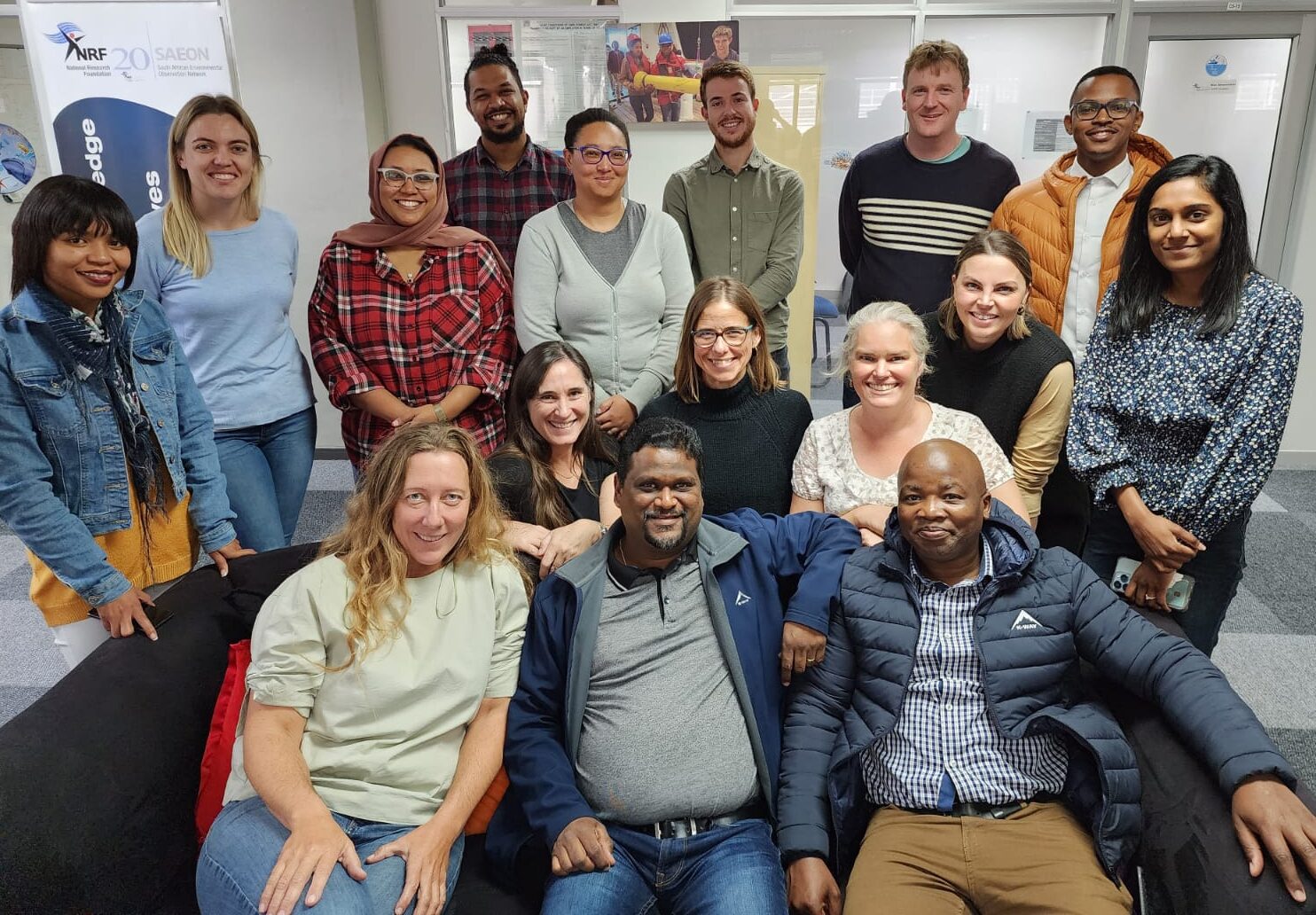
SAEON Egagasini Node and SAPRI Team (L-R) Back: Simoné Louw (Node Administrator), Laura Braby (Postdoctoral Research Fellow), Saffiya Seddick (Seamap Coordinator), Juan-Jacques Forgus (Technician), Nicole du Plessis (Science Officer), Arno Botha (PhD Student), Zach Smith (Systems Developer), Nkululeko Memela (Operational Ocean Modeller); (middle) Lara Atkinson (Offshore Marine Scientist), Jennifer Veitch (Numerical Ocean Modeller), Anne Treasure (SAPRI DPS Node Manager), Anche Louw (SAPRI Digital Marketing and Communications Manager), Daneeja Mawren (Postdoctoral Research Fellow); (front) Juliet Hermes (SAEON Egagasini Node Manager and SAPRI Manager), Nish Devanunthan (Former SAPRI Operations Coordinator) and Thomas Mtontsi (Science Engagement Officer).
Feature Image: Nish Devanunthan at the South African National Antarctic Expedition Station, SANAE IV.
Anche Louw, South African Polar Research Infrastructure (SAPRI DPS Node), 04 May 2023
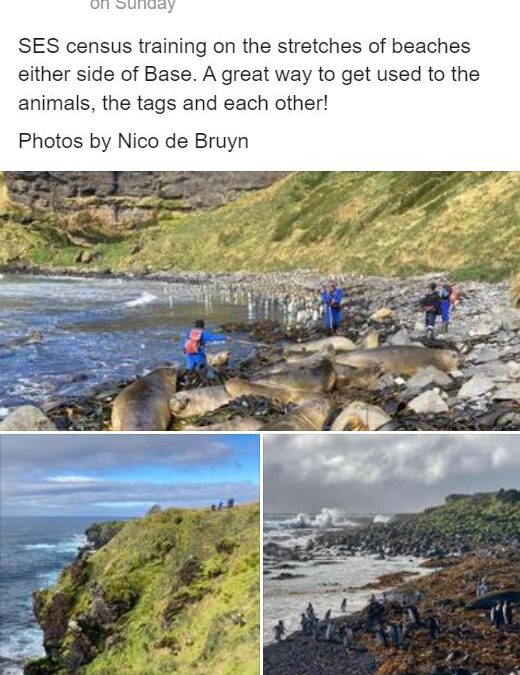
by Ria Olivier | May 2, 2023 | Current Event, Mammology, Marion Island, News, Research, SANAP, Science, Southern Ocean, sub-Antarctic
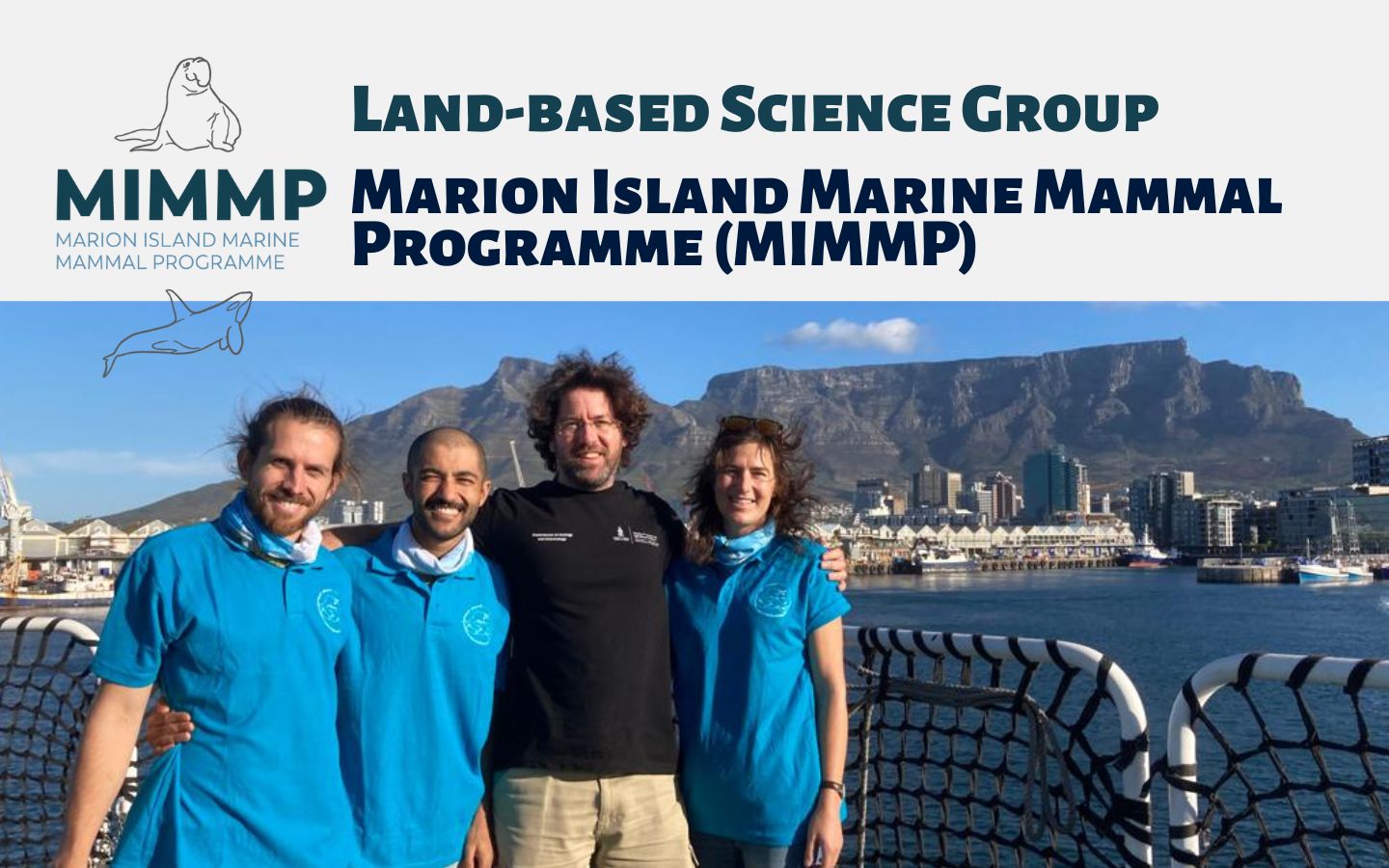
| TEAM | MIMMP |
| NRF-SANAP Funded Project Name | Marion Island Marine Mammals in Changing Environments: Individual Heterogeneity and Population Processes |
| Principal Investigator | Prof Nico de Bruyn |
| Affiliation | Mammal Research Institute, University of Pretoria |
| Takeover Sealer | Yinhla Shihlomule |
| M79 Sealer | Michael Ross |
| M79 Sealer | Banele Dosi |
| M79 Killer whaler | Monica Leitner |
| M80 Sealer | Zafar Monier |
| M80 Sealer | Dylan Seaton |
| M80 Killer whaler | Tammy Eggeling |
What are your plans for this takeover?
Into our 41st uninterrupted year of continuous monitoring! Takeover is mostly dedicated to training the new overwintering personnel, because most of the action (from a seal perspective) on the island take place outside takeover timeframes. Many long-term questions, aimed at understanding the ecology of the various species populations and their interactions with a changing environment, are pursued.
What are the main interest of the MIMMP in the sub-Antarctic region?
We are interested in how seal and killer whale populations change as the environment changes.
In more detail:
MIMMP does long-term ecological monitoring and research of four marine mammal species (Southern elephant seals, Antarctic – and Subantarctic fur seals, and Killer whales) at Marion Island. Focused primarily on population and foraging ecology, interactions between species and with their changing environments.

Check out the MIMMP Website!
Follow MIMMP on social media for the latest updates:



Most recent post on Facebook:
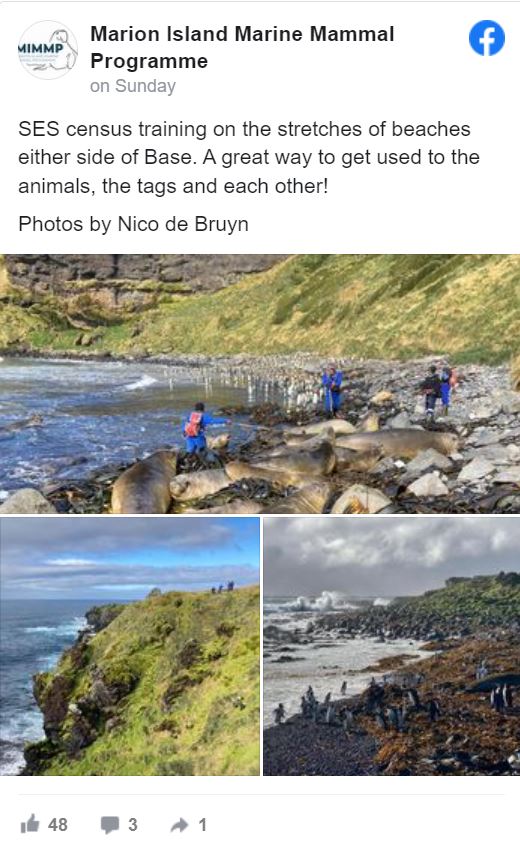
Text and images supplied by Prof Nico de Bruyn.
Featured image: The MIMMP takeover 2023 team. L-R: Dylan Seaton (M80 Sealer), Zafar Monier (M80 Sealer), Prof Nico de Bruyn (PI) and Tammy Eggeling (M80 Killer whaler). Photo taken in Cape Town, on board the S.A Agulhas II, before departure.
Anche Louw, South African Polar Research Infrastructure (SAPRI DPS Node), 02 May 2023
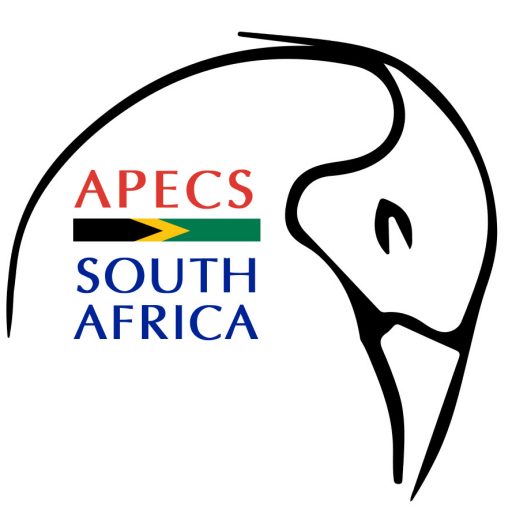
by Ria Olivier | Apr 21, 2023 | International Days, News, Research, Science, Southern Ocean
Tomorrow, 22 April 2023, is Earth Day!
We support environmental protection. One way to encourage people to protect the environment is for environmental scientists to communicate scientific findings in a way that is digestible for your audience.
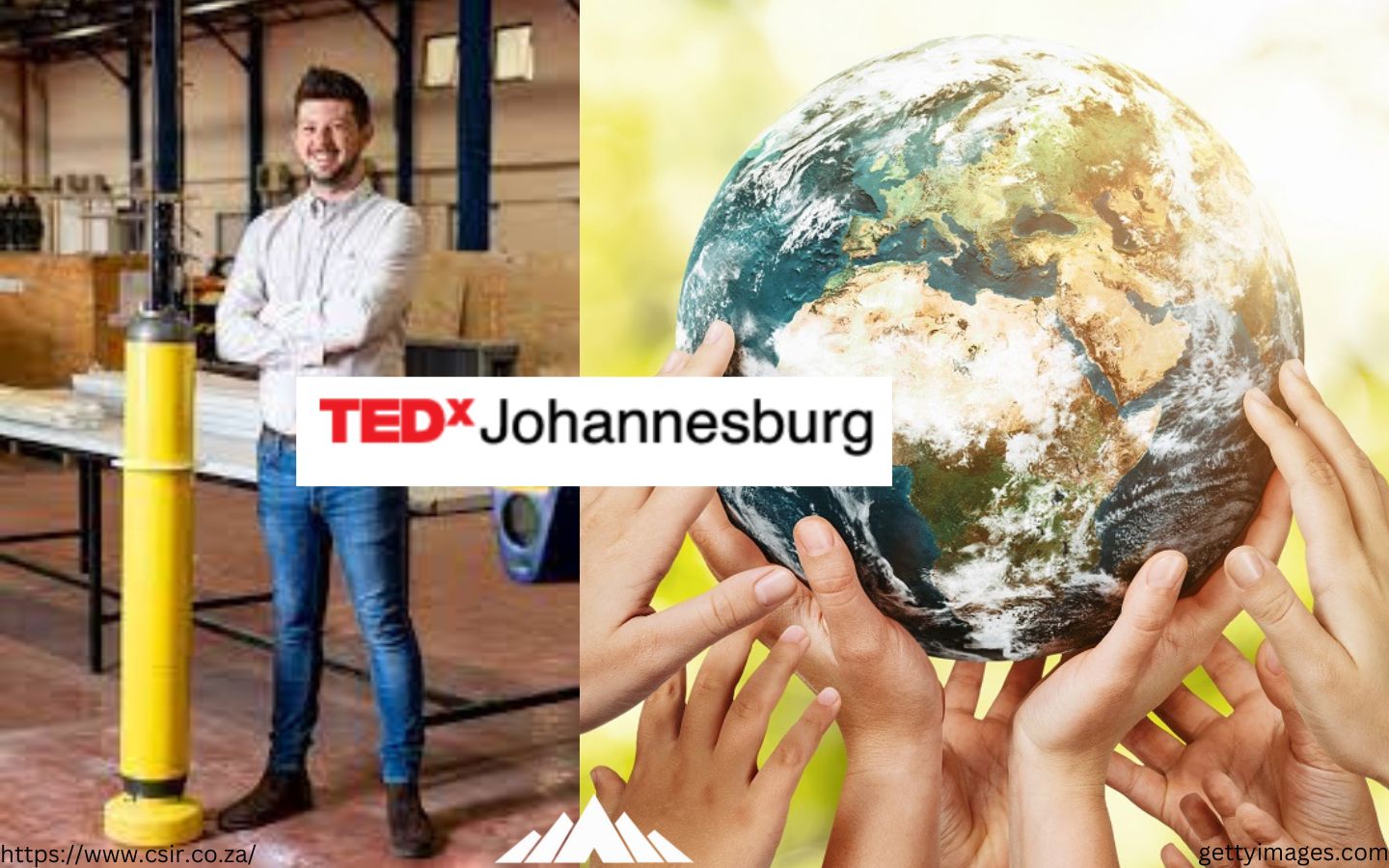
It is with great pleasure that we share that Dr Thomas Ryan-Keogh will be a speaker at TEDx Johannesburg Countdown to talk about the impacts of climate change on the Southern Ocean. “His talk will contribute towards the dialogue and action on climate change and will showcase how the CSIR is contributing towards global research efforts on the impact of climate change in Antarctica and the Southern Ocean”.
 Book your seat today!
Book your seat today!
TEDx Johannesburg is a great platform where “remarkable people doing great work can amplify their ideas on the world wide web”.
“We believe that their ideas, delivered at our sought-after events, and distributed via video on the web, will change the world” – TEDx Johannesburg.
At this event, Tommy will have only 12 minutes to share his recent oceanographic research findings, “which showed that the natural carbon cycle in the Southern Ocean is being impacted and that it could be causing even more harmful climate impacts. These findings were recently published in the top-rated journal Science under the title: Multidecadal trend of increasing iron stress in Southern Ocean phytoplankton” – CSIR
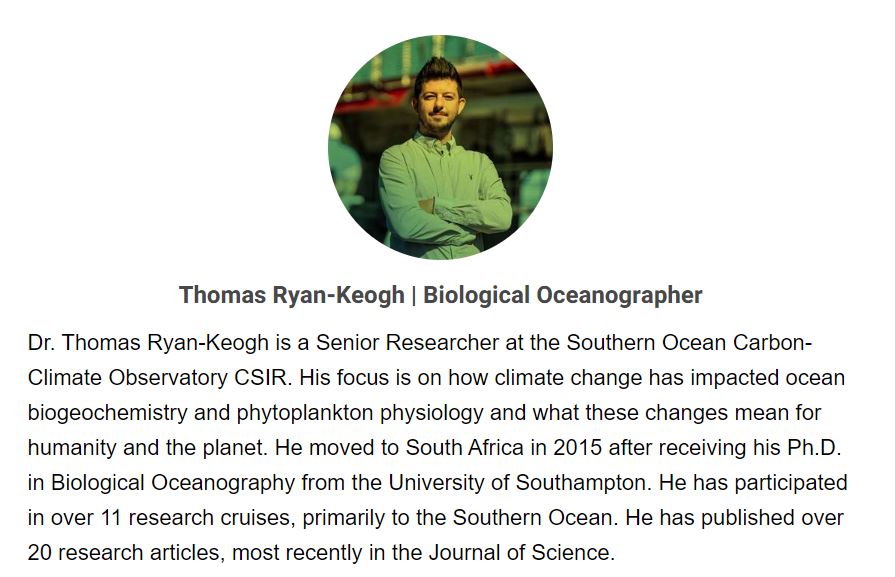
Source: TEDxJohannesburg Countdown
 Tommy is the Chair of the Association of Polar Early Career Scientists of South Africa. APECS-SA is a “National Committee of APECS international, a non-profit and voluntary organization which focuses on improving communication between young polar researchers on a local and international level.”
Tommy is the Chair of the Association of Polar Early Career Scientists of South Africa. APECS-SA is a “National Committee of APECS international, a non-profit and voluntary organization which focuses on improving communication between young polar researchers on a local and international level.”
On Social Media:
Watch this video below and learn more about the current climate crisis and The Intergovernmental Panel on Climate Change (IPCC) climate report.
“This is an important message for the world to take in: make the economy, make the development clean and climate friendly” Hoesung Lee (Chair of the IPCC).
Find the IPCC report here.
Anche Louw, South African Polar Research Infrastructure (SAPRI DPS Node), 21 April 2023
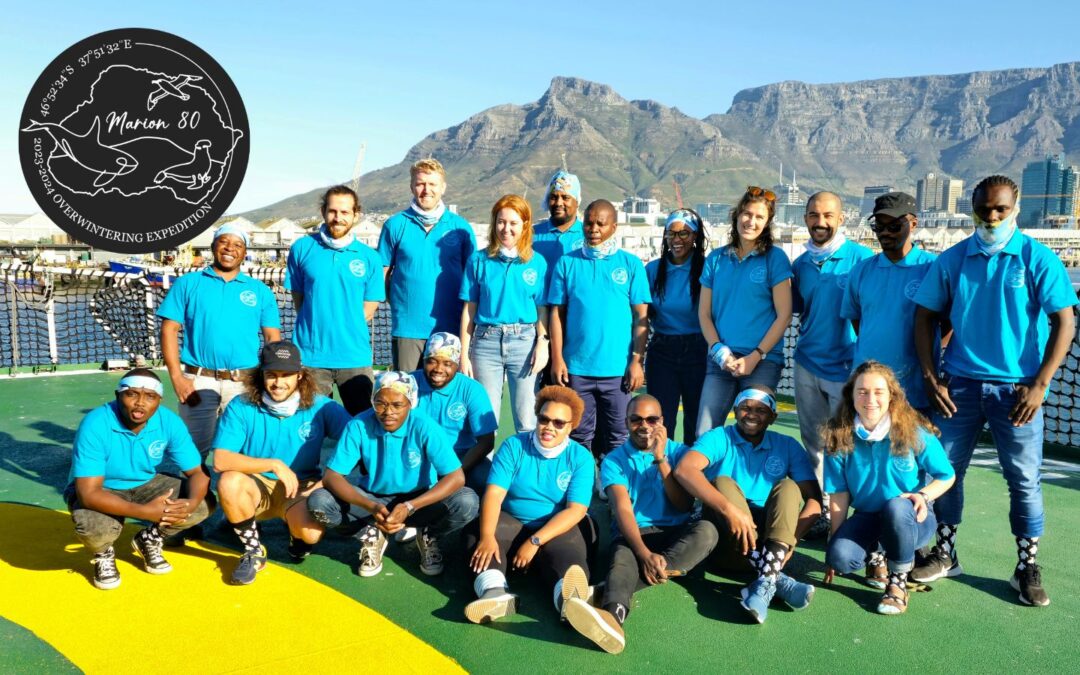
by Ria Olivier | Apr 19, 2023 | Marion Island, News, Overwintering Team, Prince Edward Islands, SA Agulhas II, SANAP, Science, Southern Ocean, Stations, Team Photo
The S.A. Agulhas II is on her final stretch of the first oceanographic leg to the sub-Antarctic Marion Island. The voyage has been overall calm, with easy and moderately sea and swells, reaching no more than 3 meters, in the past two days.
The 80th Marion Island overwintering team and land-based takeover personnel will soon reach their destination. The takeover is packed with scientific objectives, for both land and ship-based science groups, which will be shared over the next few weeks.
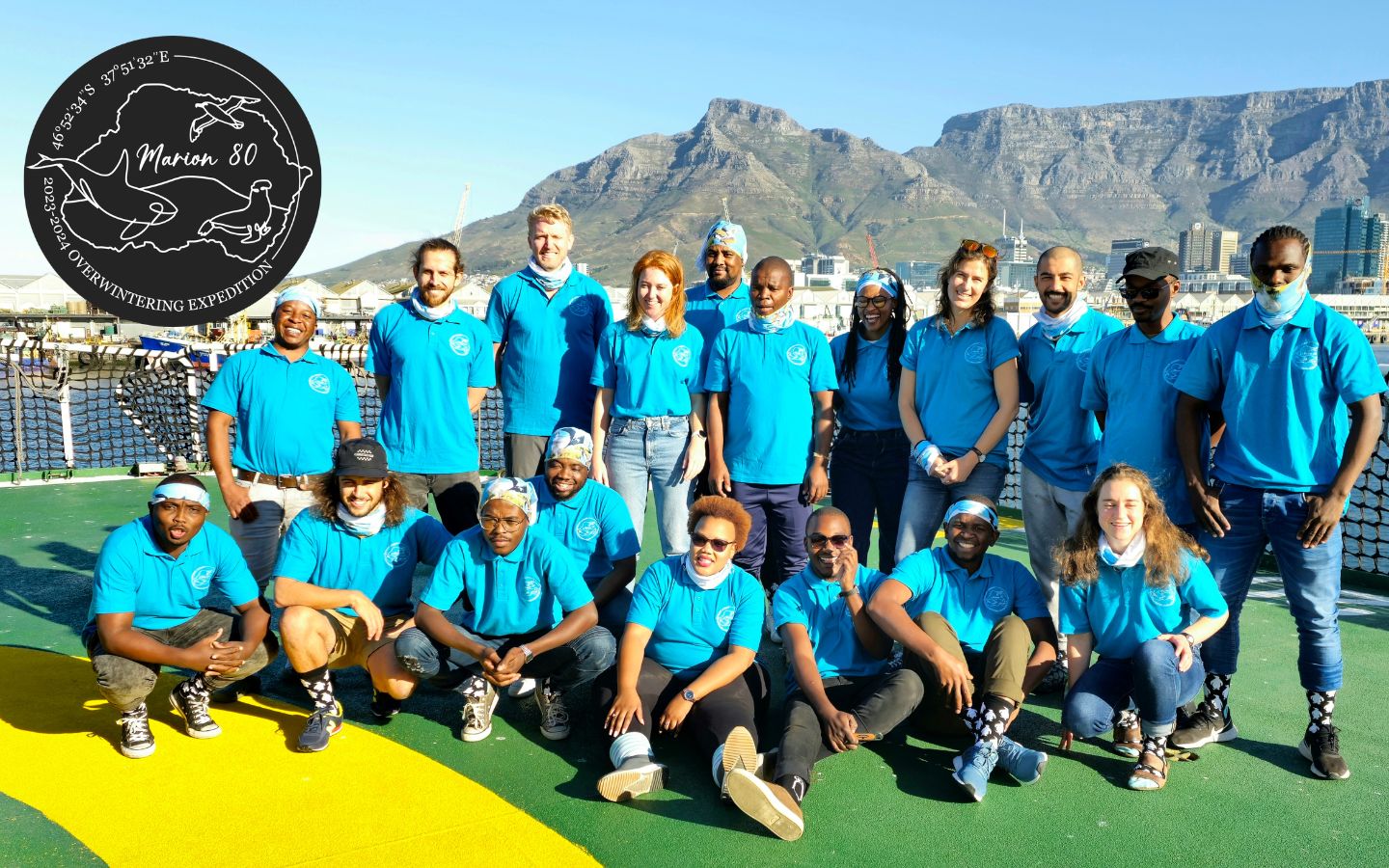
S.A. Agulhas II - Marion Island Voyage 057
| Departure: Port of Cape Town to Marion Island | Evening of 15 April 2023 |
| Expected time of arrival: Marion Island | Evening of 19 April 2023 |
| S.A. Agulhas II last communicated position (18 April 2023, 23:59) | LAT: 40° 40.6' S
LONG: 27° 45.5' E |
| Destination: Marion Island | LAT: 44° 9.1' S
LONG: 33° 22.7' E |
| Number of passengers on board | 89 passengers |
Message to the overwintering team:
May your team work hard together, take time for celebrations and grow together as a team. We wish you all the best. May you find plenty of happiness and fulfillment during your year in the sub-Antarctic!
80th Marion Island overwintering team
| Team Member | Position on M80 | Affiliation |
| Ndaedzo Nthulani | Assistant Meteorological Technician | SAWS |
| Dylan Seaton | Field Assistant: Sealer | MIMMP (UP) |
| Christopher Jones | Field Assistant: Birder | MAPRU (NMU) |
| Michelle Risi | Field Assistant: Birder | MAPRU (NMU) |
| Treasure Thobatsi | Communications Technician | DFFE |
| Gumede Mbekezeli | Electrical Technician | DFFE |
| Nikitha Fikizolo | Chef | DFFE |
| Tamara Eggeling | Field Assistant: Sealer/Killer Whaler | MIMMP (UP) |
| Zafar Monier | Field Assistant: Sealer | MIMMP (UP) |
| Kuhle Mbalane | Assistant Environmental Control Officer | DFFE |
| Mfezeko Rataza | Electronic Engineer | SANSA |
| Keith Odwa Obose | Assistant Meteorological Technician | SAWS |
| Kyle Maurer | Field Assistant: Birder | DFFE (Oceans & Coasts) |
| Mpumelelo Mabutyana | Field Assistant: Birder | DFFE (Oceans & Coasts) |
| Collen Nkadimeng | Diesel Mechanic | DFFE |
| Kelebogile Mogotsi | Senior Meteorological Technician | SAWS |
| Nkateko Maholobela | Environmental Control Officer | DFFE |
| Sandile Nkebe | Medical Orderly & Team Leader) | DFFE |
| Camilla Smyth | Field Assistant | Mouse-free Marion |
Photo caption: Marion80. Photo taken on the heli deck on board the S.A. Agulhas II. Back (L-R) Ndaedzo Nthulani, Dylan Seaton, Christopher Jones, Michelle Risi, Treasure Thobatsi, Gumede Mbekezeli, Nikitha Fikizolo, Tamara Eggeling, Zafar Monier, Kuhle Mbalane, Mfezeko Rataza; (front) Keith Odwa Obose, Kyle Maurer, Mpumelelo Mabutyana, Collen Nkadimeng, Kelebogile Mogotsi, Nkateko Maholobela, Sandile Nkebe and Camilla Smyth.
Photo credit: Christopher Jones and Michelle Risi
Anche Louw, South African Polar Research Infrastructure (SAPRI DPS Node), 19 April 2023

